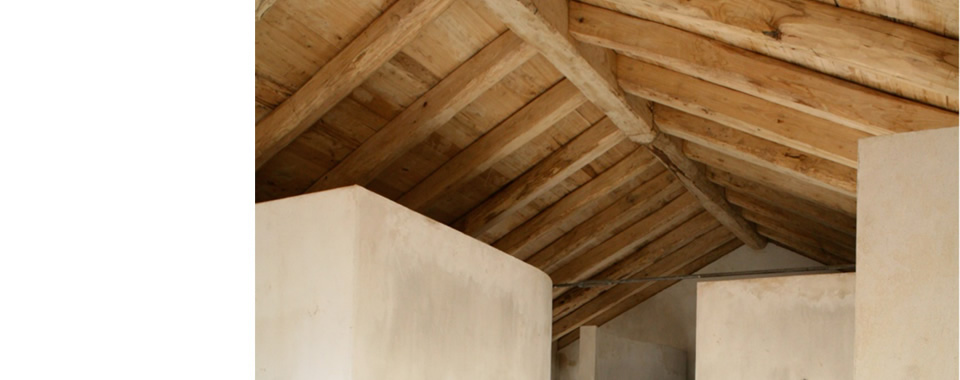

Score - Sustainable Construction in Rural and Fragile Areas for Energy efficiency
Guidelines for Integrated territorial Planning:
Photovoltaic
Portugal, specifically the south, constitutes the point of view of the existence and availability of solar energy, an area of excellence, where every year there are about 2200-3000 sunshine hours, which equates to 14-17 MJ / m2/day.
Portugal is a country with Europe's biggest solar resources, in which are strong advantages of the installation of equipment for electric production from this renewable energy resource.
The micro-production or micro-generation, is to produce electricity for sale to the electric company, through installations of low voltage and low power. It is a safe investment where the return is guaranteed by the subsidized rate that was set by the state. The producer can receive up to 2870 Euros per year tax-free (8640 Euros for installations in condominiums) and recover your investment in 7 years, accumulating gains henceforth.
Have access to the activity of micro all entities that have a contract for the supply of electricity at low voltage: individuals, companies, condominiums, public entities and other entities provided they have a contract for the supply of electricity.
An entity or individual can install as many systems as there are micro-generation of electricity supply contracts that it holds. For example, a person who has two houses with contracts of electricity assets, can install two independent micro systems
The legislation provides for the award of the feed-in tariffs for micro-generation systems based on particular technologies, provided they have powers equal to or less than 3.68 kW (11.04 kW in the case of condominiums). Currently decree No. 284/2011 limits the total power of 10MW to micro systems that can be connected to the grid in 2012 in the subsidized regime. This translates into a strong limitation on the amount of equipment that can be licensed (less than 3000 installations at the national level), so it is imperative that a quick decision by the promoter.
The energy produced by a system of micro is fully sold to an electric company, at a price that depends on the production technology employed and the subsidized rates that prevail at the time of registration of installation. The decree No. 284/2011 in 2012 established a rate subsidized reference of 32.6 cents per kWh, applicable to the first systems that were recorded until they make up the quota of 10MW nationwide. With each passing year the rate is reduced.
The final sale price depends on the production technology employed. The rate applicable to each technology is defined as a percentage of the reference value in force.
The initial rate established at the time of registration of an installation of micro-generation is guaranteed during the first eight years of operation. After this period, and during the seven years that followed, the subsidized rates guaranteed increases to 18.5 cents per kWh (applicable to registered sites in 2012). After the first fifteen years of the installation rate of sale shall in each year, equal to the rate of purchase of electricity at low voltage. Anytime the micro-producer can choose to spend the subsidized regime for the general scheme, which may be advantageous after a few years if the price of electricity consumption to increase to a value higher than the rate in force.
The profitability of a micro solar system is determined not only by the value of the selling price, but also the productivity of the plant and the cost of the initial investment. The yield of the installation depends on various factors such as the amount of available hours of sunshine annually, the conditions of deployment of the solar panels and efficiency of the equipment used. The cost of a solar photovoltaic micro system depends on the characteristics of each specific installation, power system and the existence or not of a solar tracker.
In general, higher power installations are more profitable, because some costs are independent of installed power. For example, the cost of the inverter, the meter, hand labor and solar thermal collectors, have the same value whether a system of 2 kW or 3.68 kW.
To qualify for the subsidized rate, micro-generation installations must include, in addition to the power generation system, a solar thermal system for hot water heating and / or air conditioning. As an alternative to solar thermal system, you can opt for a system producing hot water or space heating based on biomass or firewood. These allow you to save on gas consumption, gas or electricity, contributing to the overall profitability of the installation
Producing electricity using photovoltaic systems and sell it to the electric companies will be increasingly less profitable and in some cases, even lose all interest. In 2012, the cost of equipment increased and reduces the compensation. The systems that produce electricity (such as photovoltaic panels) fail to qualify for the intermediate rate of VAT to be taxed at 23 percent. And the price at which the producer sells the energy to EDP falls nearly 5 cents per kWh, 3 cents more than the originally planned.
The prospects are even less promising for those who advance the micro-generation in 2012. In late October, new tariffs were published and, instead of the expected reduction of 2 cents in both periods, the rate paid during the first eight years down nearly 5 cents to 32.6 cents per kWh.
